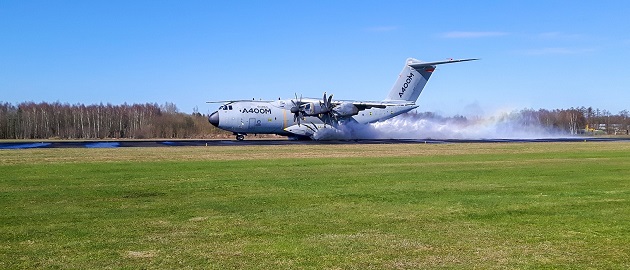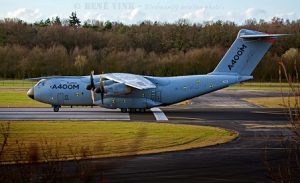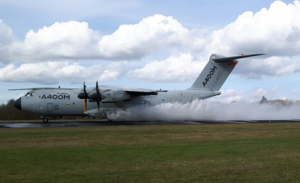The Netherlands Aerospace Centre (NLR) last week supervised a number of brake tests on an Airbus A400 aircraft at Twente Airport. The tests, carried out at the request of Airbus, were performed in a water trough created by NLR on the runway. The quantity of water in the trough corresponded with the quantity that may occur on a runway during heavy rainfalls and that may potentially cause aquaplaning. Equipment on board the aircraft recorded the behaviour of the brakes. The purpose of the tests was to examine the aircraft’s braking performance under these extreme conditions and to improve it. This will help to avoid a runway overrun, a situation where an aircraft lands but is unable to stop before the end of the runway.
Last week’s tests were carried out as part of the Future Sky Safety project which is funded by the European Commission’s Horizon 2020 Framework Programme. The project includes the ‘Runway Excursions‘ task headed by NLR. This task will use the knowledge obtained through this work to improve regulations and thus further increase the safety of flying.
The first water trough tests had been conducted at Twente Airport in September 2016 using a significantly smaller research plane, Citation, which belongs to NLR and Delft University of Technology. The knowledge obtained by NLR through these tests can also be applied to perform similar tests for other aircraft manufacturers.
This research was funded from the EU’s Horizon 2020 Research and Innovation Programme under Grant Agreement No. 640597, but neither the report nor this press release necessarily reflects the views of the European Commission.




